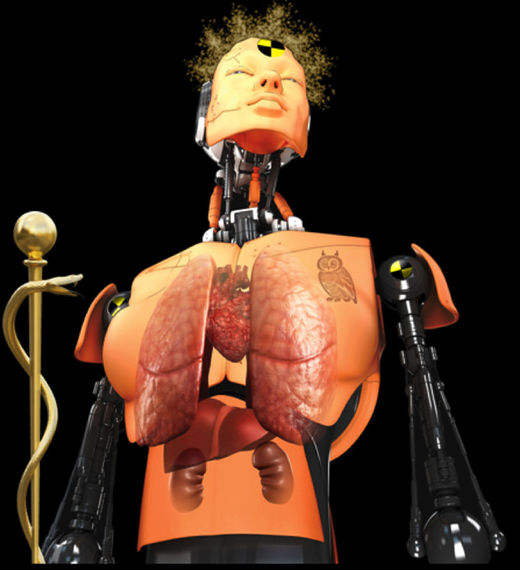"By developing this 'homo minutus,' we are stepping beyond the need for animal or Petri dish testing: There are huge benefits in developing drug and toxicity analysis systems that can mimic the response of actual human organs," said Rashi Iyer, a senior scientist at Los Alamos National Laboratory.
ATHENA, the Advanced Tissue-engineered Human Ectypal Network Analyzer project team, is nearing the full integration of four human organ constructs — liver, heart, lung and kidney — each organ component is about the size of a smartphone screen, and the whole ATHENA "body" of interconnected organs will fit neatly on a desk.
ATHENA project as it begins to integrate the various organ systems into a single system:
Some 40 percent of pharmaceuticals fail their clinical trials and there are thousands of chemicals whose effects on humans are simply unknown. Providing a realistic, cost-effective and rapid screening system such as ATHENA with high-throughput capabilities could provide major benefits to the medical field, screening more accurately and offering a greater chance of clinical trial success.
The ATHENA project brings together top capabilities and researchers in this pioneering field of research. The project components are divided as follows:"We spent a bit of time analyzing the challenges in building miniature human organ constructs, and we believe we've figured out how to capture the key features we need," said Wikswo. "There are a lot of trade-offs, and we're not trying to build an exact replica of a human liver, but an in vitro model that allows us to measure human liver responses to drugs and toxins that cannot be replicated by a layer of cells growing on plastic."In addition to leading and coordinating the project, Iyer is directing work on the lung and kidney organ as well as step-wise integration and validation of all of the organs in the ATHENA perfusion platform - all of which will be executed at LANL. Wikswo and his VIIBRE group are building the hardware platform that 'runs' and monitors the health of the entire system, while the first organ, the liver construct, which was recently tested in the ATHENA platform at VIIBRE, is being developed by Katrin Zeilinger, head of the Bioreactor Group, Experimental Surgery, and colleagues at Charité Universitätsmedizin, Berlin, Germany. Kevin Kit Parker, Tarr Family Professor of Bioengineering and Applied Physics at Harvard University, is leading the heart effort. Shuvo Roy, Director of the Biomedical Microdevices Laboratory at the University of California San Francisco (UCSF), and Associate Professor of Medicine William Fissell of Vanderbilt are developing the kidney constructs. Andrzej Przekwas, CTO and Senior Vice President for Research of CFD Research Corporation (CFDRC), a technology company in Huntsville, AL, is building a mathematical model of ATHENA to facilitate system design and physiologically-based pharmacokinetic/pharmacodynamic (PB-PK/PD) models to guide drug exposure studies and data extrapolation. "This component is unique and critical when building an integrated ex vivo system mimicking the human body," said the DTRA program manager. LANL and Vanderbilt in collaboration with CFDRC will develop a blood mimic to sustain the four devices.
ATHENA is funded by the Defense Threat Reduction Agency (DTRA) and is a collaboration of Los Alamos National Laboratory, Harvard University, Vanderbilt University, Charité Universitätsmedizin, Berlin, Germany, CFD Research Coporation, and the University of California San Francisco.




What about the trauma of PTSD? Well I suppose they have a program for that too, in the making, after all you can't have a warrior with a conscience if you need a killing machine. The article all sounds sooo benevolent.
From the editors comment:
That is the basis of the shield that we can provide across the full threat spectrum -- chemical, biological, radiological, nuclear and high yield explosives. At DTRA/SCC-WMD, our values allow personnel to achieve their commitment to total customer satisfaction by meeting and anticipating customer needs."
In this context, it is clear to whom the ATHENA project is intended to benefit.
Yes it's very clear, a cabal of beings who are less than human, who care nothing about humanity, human life or the world we inhabit. A cabal who is bent on world domination and want to turn humanity into a race of slaves all for profit and there own twisted view of world creation.